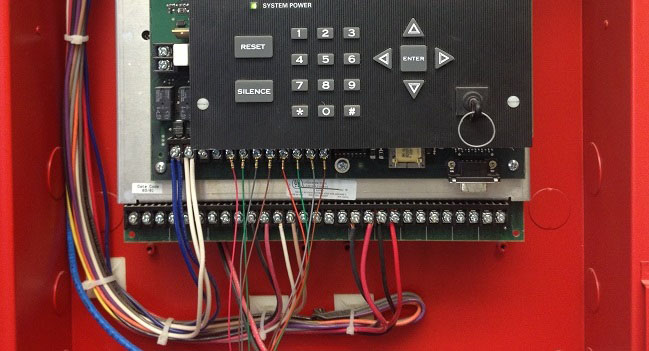March 11, 2016 | Michael Neils
In an acute care hospital, essential services must be maintained 24 hours a day, seven days a week. So what happens when crucial electrical infrastructure – such as the hospital campus fire alarm system – must be replaced? Like most successful projects, a well-executed fire alarm upgrade begins with proper planning.
Understanding the Requirements
Fire alarm systems are complex, and in order to meet current code requirements, must provide a number of functional and operational features:
- Alarm Initiation – automatic or manual devices (such as smoke detectors or pull stations) that initiate the alarm signal in response to a fire event.
- Alarm Notification – visual or auditory devices that provide notification of a fire (for example, strobes or horns).
- Equipment Interfaces – connections to building equipment that must be activated or controlled during a fire such as smoke doors, fire curtains, HVAC equipment, fire/smoke dampers, and the fire sprinkler system.
- Annunciation – communication devices (typically an LCD screen or collection of lights) that monitor the fire alarm system and relay information to fire fighting crews or building personnel.
- Remote Communication – signaling to a central station (such as an alarm company).
- Reporting – the ability to produce event logs (for alarm and trouble events).
- Networking – communication capabilities for multi-building campus systems.
Typically, the upgrade of a hospital fire alarm system requires the installation of a new fire alarm control panel to provide the current technology necessary to provide these features. In addition, code updates require careful review to determine the need for new devices.
Maintaining Essential Systems
Because a hospital is occupied 24/7, the existing fire alarm system operation must be maintained prior to testing and acceptance of the new fire alarm system. This means that the new and existing fire alarm systems must interconnect in the interim to provide local alarm notification, equipment interface, annunciation and remote signaling functions. In addition, where security is a requirement, the fire alarm system must interface to the security system in order to maintain secure functions during a fire alarm event.
Planning for Phased Installation
One approach to phased installation would begin with the installation of a new networkable fire alarm panel in a building. If the project team and the facility prefer phased installation and testing, the project team needs to confirm the acceptability of the phasing with the fire marshal. Phasing would provide incremental testing and acceptance on an area-by-area of floor-by- floor approach. In the areas where the new fire alarm system achieves full operational functions, selective demolition of the existing system devices in that area could occur, subject to fire marshal’s approval.
During construction, both the existing and new fire alarm systems would operate in parallel until a portion or all of the new system is operational. Initiation of alarms in either system would cause an alarm to occur in the other system. In a multiple building project, the new panels would connect in a network. All buildings could have phased installation. Testing and acceptance would occur in phases in each building until the new systems are operational for the entire building and accepted by the fire marshal.
Building Your Team
A team effort is required in order to successfully plan and coordinate the design and installation of a hospital fire alarm upgrade. There are many stakeholders involved in the project – the owner’s project team, facility management and engineering, the design team and the fire marshal. Engaging the team members early in the design process allows for greater collaboration and a more integrated approach that will help guide the project through design, construction, testing and acceptance.


